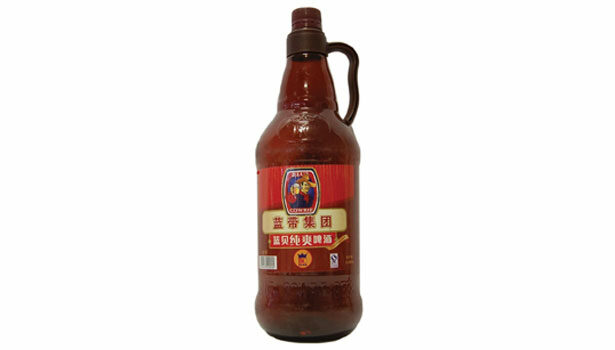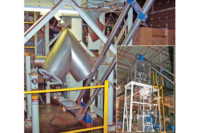This mug’s for Mao

Tsingtao (left) is the dominant beer brand in China and has been available for years in the US. It is being joined by other China exports like Beijing beer. A plastic fitment and jug handle are features of a PET bottle of Blue Cowrie beer, which sports the image of a Stetson-wearing cowboy hoisting a mug. Source: Mintel Group Ltd.



A new report outlines the similarities and contrasts of China’s emerging beer market and its American counterpart.
Chinese consumers are drinking their American counterparts under the table, research from Mintel Group Ltd. suggests. While beer sales in the US declined 1.6 percent over the last five years, they grew 29 percent in China, topping 426 million barrels, two and a half times more than the 177.7 million barrels guzzled in the US.
The financial value of the US market remains $19 billion larger, but the gap is shrinking. Based on Mintel’s first research report on Chinese consumer behavior, retail and foodservice purchases of a liter of beer cost an average of 9 renminbi, the equivalent of $2.90 a six pack. And just as Americans are switching to more expensive craft beers, Chinese drinkers are gravitating to premium beers, according to Matthew Crabbe, director of Asia-Pacific research at Mintel.
“You still have really cheap beer, but most of the market is moving more premium,” Crabbe explained in an email from Mintel’s Malaysia office. “Chinese people are getting richer, so they are paying for more expensive beers.”
Six packs of cans and bottles are the most common retail packaging, he adds, though novel containers are favored for some of the premium offerings. For example, Blue Cowrie beer is marketed in a PET container outfitted with a jug handle. Aluminum bottles of Budweiser salute the Year of the Dragon.
“Beer has been in China for over 100 years,” Crabbe writes, a drop in the glass compared to Western cultures, and social acceptance is still evolving. Women in their 20s represent a bigger share of female drinkers than their male counterparts, accounting for 42 percent of female beer drinkers. Tastes also are evolving: Lagers are 95 percent of the market, and packaged beers typically are unpasteurized. “The Chinese prefer cleaner, lighter and fresher beers and are only now beginning to learn more about beers with stronger flavors,” according to Crabbe. “A connoisseur beer market is beginning to emerge among well-heeled urban Chinese who have perhaps become bored with wine and are looking for something different.”
Tsingtao is the market leader with an 18.8 percent share, closely followed by SABMiller’s China Resources Snow with 17.6 percent and Budweiser InBev at 14.7 percent. Beijing’s Yanjing and other brands have joined Tsingtao as exports to the US, though international breweries are exporting more beer to China than the Chinese are shipping abroad. Among the leading China imports: Budweiser, Pabst and Kirin.
For more information:
Matthew Crabbe, Mintel Group Malaysia, 60-3-6203-5212, mcrabbe@mintel.com
Looking for a reprint of this article?
From high-res PDFs to custom plaques, order your copy today!







